What Is Mazut: Advantages, Applications + Hazards
What is mazut, and what role does it play in the energy industry? Fuel oil, also known as mazut, is a heavy, thick, and low-cost fuel produced from the residue of crude oil distillation and mainly used in industries and power plants. This fuel consists of heavy hydrocarbons, sulfur, nitrogen, and metals, and generates a high level of thermal energy.
Because of its low price and high heating power, mazut is an economical option for power generation, industrial heating, fueling ships, and large boilers. However, burning mazut causes severe air pollution, releases sulfur dioxide and particulate matter. It also harms human health and the environment. Furthermore, it poses challenges for storage and transportation.
Therefore, in this article from the Iran ETrade blog, we will explain what mazut is, how it is used, and what its advantages and disadvantages are.
What is Mazut?
Mazut, also known as heavy fuel or furnace oil, is a heavy, black-colored fuel with high viscosity and a high flash point. Its composition mainly consists of heavy hydrocarbons and elements such as sulfur and metals.
What is mazut, and why does it burn? Fuel oil, also called furnace oil or black oil, is a dark, thick, and heavy fuel with a high flash point. This fuel is a type of petroleum hydrocarbon that forms after naphtha, gasoline, and kerosene in the refining process.
Mazut’s composition includes aliphatic hydrocarbons (both chain and cyclic compounds similar to non-cyclic ones), aromatic compounds (such as benzene and its derivatives), and petroleum hydrocarbons, along with significant amounts of sulfur and nitrogen. This substance usually does not ignite easily at low temperatures, which is why it requires specialized combustion systems.
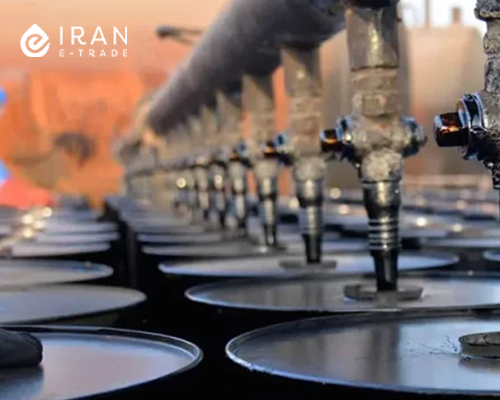
Chemical Composition of Mazut
Fuel oil or mazut is a mixture of heavy hydrocarbons along with significant amounts of sulfur, nitrogen, and heavy metals. This composition causes the combustion of fuel oil to release large quantities of sulfur dioxide, particulate matter, and nitrogen oxides into the air.
Mazut consists of carbon, hydrogen, oxygen, nitrogen, sulfur, heavy metals, and ash. Heavy or viscous fuel oil usually contains up to 88.5% carbon and up to 11.5% hydrogen, with high levels of sulfur and nitrogen. In contrast, light fuel oil has a lower carbon ratio, which reduces its viscosity and density, making it less viscous and easier to use.
Mazut, also known as furnace oil, is a heavy refinery fuel derived from crude oil residue that produces high thermal energy. Because of its low cost, fuel oil has uses in power plants, steel, cement, and petrochemical industries, as well as for industrial heating and marine transportation. Its composition includes heavy hydrocarbons, sulfur, nitrogen, and metals, which cause high pollution, acid rain, and respiratory problems. Mazut is inexpensive and readily available, and it is compatible with existing industrial equipment. However, its high viscosity, high flash point, and environmental impacts create limitations. Pollution reduction is possible through clean fuels, particle filters, and NOx reduction technologies.
Types of Mazut
What is the composition of mazut? Mazut contains carbon, hydrogen, oxygen, nitrogen, sulfur, heavy metals, and ash.
Fuel oil is classified based on different factors. Therefore, in this section, we focus on types of fuel oil based on their sulfur content and viscosity.
1. Different Types of Mazut Based on Sulfur Content
Fuel oil is divided into four categories based on its sulfur content:
- Ultra-low sulfur fuel oil (less than 0.5%)
- Low sulfur fuel oil (between 0.5% and 1%)
- Medium sulfur fuel oil (between 1% and 2%)
- High sulfur fuel oil (between 2% and 3.5%)
What is the best type of mazut? The lower the sulfur content, the more expensive and higher quality the fuel is. And the reason for that is that sulfur in fuel oil causes equipment corrosion and air pollution. Therefore, the lesser the sulfur, the higher the quality of mazut.
2. Types of Mazut Based on Viscosity
What is mazut’s viscosity? Viscosity is a measure of the fuel’s thickness. High-viscosity fuel oils require more heat for combustion, while lower-viscosity fuel oils are easier to use in combustion systems. Therefore, fuel oil is classified by viscosity into grades 100, 180, 230, 280, and 380.
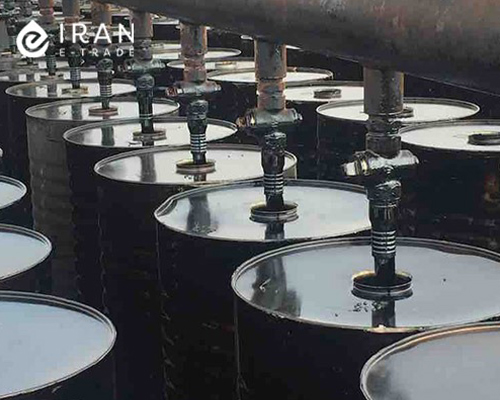
Characteristics of Fuel Oil (Mazut)
Low cost, high thermal energy, easy availability in oil-producing countries, and compatibility with existing industrial equipment are some of the main advantages of fuel oil.
In this section, we will examine the characteristics of mazut and its physical and chemical properties. The physical properties of fuel oil depend on its production quality, the type of crude oil used (such as high-sulfur oil or high-paraffin oil), processing conditions, final composition, and storage methods.
- High viscosity: Fuel oil is thick and heavy شnd requires a high level of heating to flow.
- High density: Its density is greater than that of lighter fuels such as gas oil and kerosene, giving it more energy per unit volume.
- High calorific value: It releases a large amount of energy when burned, which is useful for industries and power plants.
- Low cost: It is cheaper compared to other fuels such as gas oil and natural gas.
- Dark color and distinctive odor: Fuel oil is usually dark brown or black and has a strong, characteristic smell.
- Carbon emissions: Burning fuel oil releases carbon and other environmental pollutants.
- High sulfur and metal content: The presence of sulfur and heavy metals increases pollution and environmental impact.
| Physical properties of fuel oil | |
|---|---|
| Appearance and color | Black or dark brown, often with an oily and glossy appearance |
| Viscosity | Thick; semi-solid or semi-liquid at low temperatures |
| Odour | Strong and intense, similar to crude oil |
| Density | High (suitable for heating and use in diesel engines) |
| Sulfur content | Relatively high, which increases SO production₂ and other pollutant emissions |
| Hydrocarbon composition | A mixture of paraffins, naphthenes, and aromatic compounds |
| Impurities | Heavy metals, water, and sediments that require refining or separation |
| Calorific value | High energy released upon combustion, useful for electricity and steam generation |
| Flash point | Higher than lighter fuels |

What is the Use of Mazut?
What are the uses of burning fuel oil? Mazut is usable in power plants, steel and cement industries, petrochemical units, and industrial heating systems. It is also useful as ship fuel due to its high energy and lower cost.
What is mazut, and what are its applications? This heavy and inexpensive fuel is applicable in various industrial, agricultural, commercial, machinery, and vehicle sectors. It is useful for firing furnaces and boilers, generating electricity, and operating emergency generators. Some of its major applications are:
1. Energy Supply in Power Plants
Due to its high calorific value and low cost, fuel oil serves as an alternative fuel for power plants during peak demand or when natural gas is unavailable. Furthermore, mazut is one of the common fuels used in power plants for electricity generation.
Therefore, it is usable in boilers and steam generators to provide the thermal energy required to produce steam and, ultimately, electricity.
2. Fuel for Ships and Marine Transport Equipment
Mazut is very suitable for use in ship engines and marine transport vehicles that require a heavy, high-energy fuel. Therefore, it is also called marine oil/fuel.
3. Petrochemical and Chemical Processes
Fuel oil is applicable in certain petrochemical and chemical processes as an energy source or auxiliary feed. The heat generated from burning Mazut is applied in chemical reactions, steam production, and supplying thermal energy to industrial equipment, as well as in the production of petrochemical raw materials.
4. Steel and Cement Industries
What is mazut’s use in cement industries? Producing steel and cement or melting metals requires very high temperatures. Therefore, fuel oil, with its high calorific value, is a suitable option for boilers and industrial furnaces in these industries because it provides the necessary heat for metal melting or cement baking.
5. Heating Industries
In some industrial heating systems and boilers, mazut is used to produce heat. Since this fuel is heavy, it is usually heated with specialized equipment to reach a combustible state. This application is common in cold regions and in factories that require continuous heating.
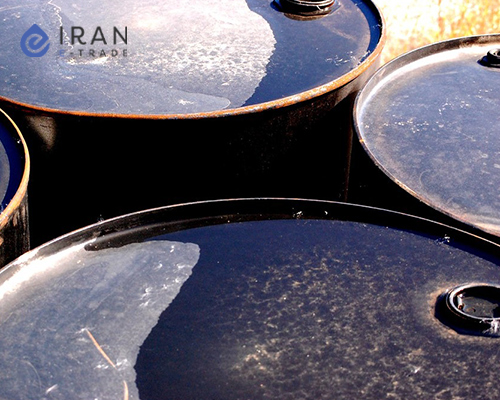
What are the Advantages of Using Mazut?
Higher safety, reasonable energy efficiency, greater heat production, and cost-effectiveness are among the advantages of fuel oil. Light mazut is very stable, combustible but non-explosive; therefore, even in the case of leakage within the fuel supply chain, there is no risk of explosion.
Although we often hear about the high emissions of fuel oil, what are its benefits? Mazut has low sulfur content and provides reliable performance even under the harshest conditions, especially in extremely cold weather.
Additionally, light mazut is very stable, combustible, but non-explosive. Thus, even if it leaks within the fuel supply chain, it poses no explosion risk.
Overall, the advantages of using light mazut compared to natural gas include higher safety, reasonable energy efficiency, greater heat production, and cost-effectiveness. We will explain more about this below.
1. Lower Cost of Furnace Oil Compared to Other Fuels
If you want to know what the main advantage of mazut is, the answer lies in its low price compared to gas oil, natural gas, and other industrial fuels. Therefore, this economic benefit has led many power plants and large industries with high fuel consumption to use this fuel oil.
2. High Energy
What is mazut’s mount of energy? Fuel oil has a high calorific value, meaning that burning each kilogram releases a significant amount of energy. Therefore, this trait makes it suitable for electricity generation, industrial heating, and petrochemical processing operations.
3. Easy Availability
Mazut is easily produced in refineries, and in oil-rich countries like Iran, it is very accessible and inexpensive.
4. Compatibility with Existing Equipment
Another advantage of fuel oil is its compatibility with equipment. Many industrial facilities and older power plants are designed to use heavy fuels. Therefore, mazut is applicable in these Industries without major modifications to equipment or significant investment to replace the fuel.
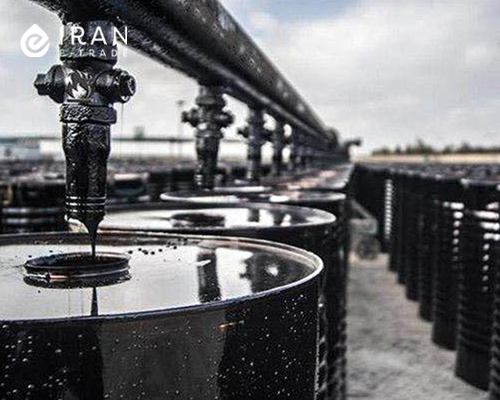
What are the Disadvantages and Hazards of Mazut?
Burning fuel oil like mazut releases large amounts of pollutants such as sulfur dioxide and particulate matter, leading to air pollution, acid rain, cardiovascular and respiratory problems, and environmental damage.
Therefore, in this section, we will examine the hazards of burning fuel oil and its consequences for human health and the environment.
1. Effects of Mazut on Environmental Pollution
What is mazut’s effect on environment? When fuel oil is burned, sulfur gases and particles such as sulfates and nitrates are released.
Therefore, besides producing an unpleasant odor, this leads to air pollution, soil and surface water contamination, acid rain, ecosystem destruction, and an increased risk of cardiovascular and respiratory diseases.
Furthermore, one of the main causes of air pollution in Tehran, Arak, Qazvin, Isfahan, and other cities is the burning of mazut or furnace oil.
2. Effects of Mazut on Human Health
Prolonged exposure to fuel oil smoke and inhalation of its particles can cause respiratory problems, allergies, cardiovascular diseases, neurological issues, and even lung cancer.
3. Storage and Transportation Requirements
Due to its high viscosity and high flash point, furnace oil is difficult to store and transport. It is because storing and handling mazut requires specialized equipment and tanks, which can pose challenges.
What is Mazut Poisoning and What are its Symptoms?
Fuel oil is a challenging fuel due to its high concentration, presence of sulfur and heavy metals, severe pollution, and harm to human health and the environment. Therefore, its use is restricted or banned in many countries.
What are the symptoms of mazut poisoning? Direct contact or exposure to fuel oil may cause poisoning and respiratory problems such as shortness of breath, sore throat, coughing, and lung inflammation.
Also, headache, dizziness, nausea, eye and throat irritation, and in severe cases, sudden drops in blood pressure, loss of consciousness, and impaired liver and kidney function are other effects of furnace oil poisoning.
Why is Fuel Oil Smoke White?
What is fuel oil’s white smoke? The whiteness of mazut smoke is due to the presence of water vapor produced during combustion, fine carbon particles and impurities, as well as chemical compounds such as sulfur and hydrocarbons.
Additionally, mazut’s combustion conditions, such as low temperature or oxygen deficiency, can make mazut’s smoke appear whiter or greyer.
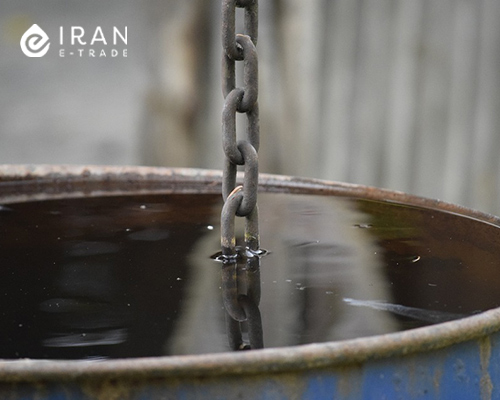
How is Furnace Oil or Mazut Produced?
Mazut is obtained from the residue of crude oil distillation. After separating lighter products such as gasoline and gas oil, the remaining heavy fraction is furnace oil or fuel oil.
Now that we are familiar with the advantages, disadvantages, and production process of furnace oil, you might ask: What is the difference between mazut and diesel fuel?
Difference Between Mazut and Gas Oil
There are significant differences between gas oil and mazut:
- Chemical composition and ignition: Mazut consists of heavier hydrocarbons and requires higher temperatures for combustion, while gas oil is lighter and ignites more easily.
- Applications and density: Mazut is mainly used in heavy industries and power plants, whereas gas oil is primarily applicable in vehicles, machinery, and small power plants.
- Price and environmental impact: Mazut is cheaper but more polluting, while gas oil is more expensive but produces less pollution.
In Which Countries is the Use of Mazut Banned?
Global trends indicate that countries are moving toward cleaner energy and renewable fuels. Therefore, the burning of mazut is restricted or banned in many countries due to its environmental impact. For instance, these countries include those in the European Union, Japan, Canada, and some U.S. states such as California.
Frequently Asked Questions Regarding “What is Mazut”
In this article from Iran ETrade blog, we discussed what mazut is, why it burns, its applications, and its advantages and disadvantages. Now, we answer some common questions on this topic.
What is Mazut?
Furnace oil or mazut is a heavy refinery fuel produced from the residue of crude oil.
What are the Disadvantages of Mazut?
What is mazut’s advantages? The main disadvantages of using mazut are air pollution, respiratory diseases, and negative environmental impacts.
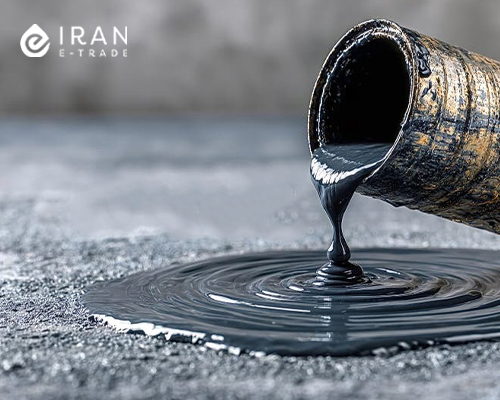
What are the Effects of Fuel Oil on Human Health?
Burning mazut increases the risk of cardiovascular problems, asthma, cancer, skin and eye issues, and harms pregnant women and their fetuses.
What are the Effects of Fuel Oil on the Environment?
Mazut causes air, water, and soil pollution, increases acid rain, and threatens ecosystems.
On What Basis are Mazut Types Classified?
Mazut is classified into different types based on its sulfur content or viscosity.
What is the Connection Between Mazut and Electricity?
What is mazut’s connection to electricity? Fuel oil, due to its high calorific value and cost-effectiveness, is usable in some thermal power plants for electricity generation.
What is Fuel Oil and Why Does it Burn?
Mazut is a mixture of heavy hydrocarbons that burns at high temperatures and releases a large amount of energy.
How Can Air Pollution from Burning Mazut be Reduced?
To reduce the effects of mazut , you can use flue gas cleaning technologies, particulate filters, clean fuels, and NOx reduction technologies.
What are the limitations of using Mazut?
Do you know what is mazut’s limitations for its use? High pollution, presence of sulfur and heavy metals, high viscosity, storage challenges, and harmful effects on human health and the environment impose limitations on the use of fuel oil.

source: pkw.energy
Bitumen Price
- What Is An Oil Lubricant: Types, Applications + Production
- What Is LPG: Properties + Uses Liquefied Petroleum Gas
- What Is Petroleum Paraffin: Types + Properties And Applications
- What is Petroleum Coke: Types + Applications
- What Is Diesel fuel: Types Gas oil + Applications
- What is gasoline? Types + Uses and Production Process









